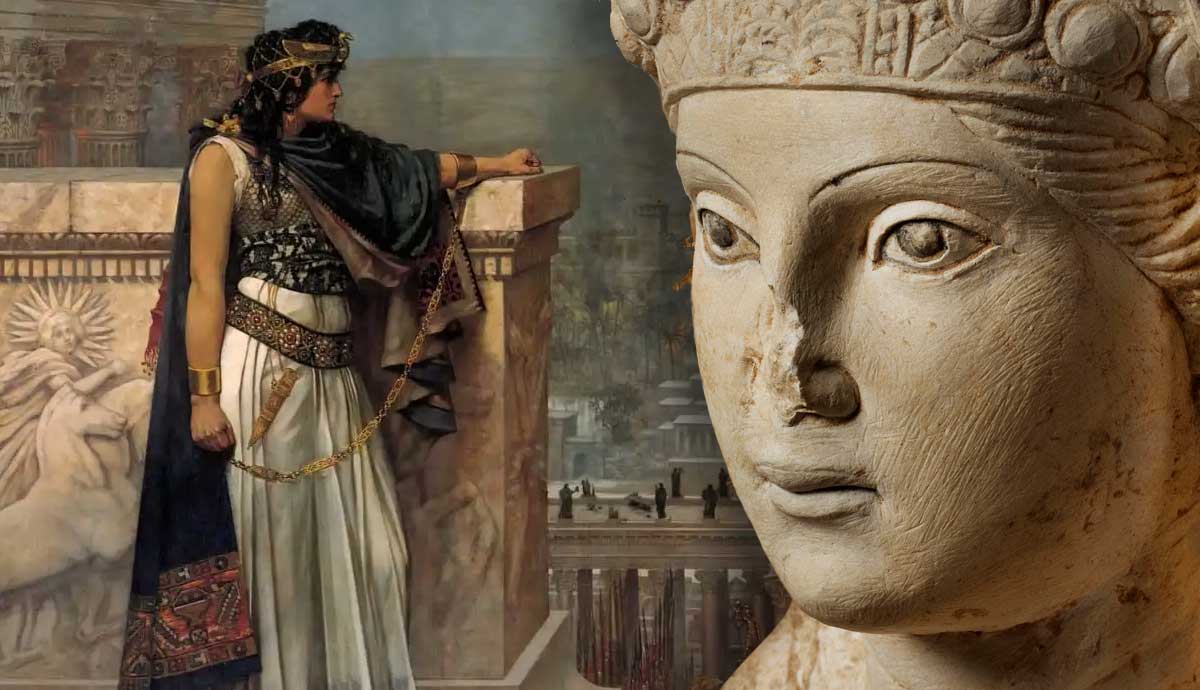
Queen Zenobia of Palmyra was one of the most fascinating figures in the ancient world. Ruling over the short-lived Palmyrene Empire, Queen Zenobia defied tradition, becoming a powerful and successful female leader in the period when men sat on the throne. Ambitious Zenobia went even further, daring to defy the authority of the Roman emperor. Zenobia’s challenge was successful, and for a brief period, Palmyra controlled almost all of the Roman East, including the wealthiest province and breadbasket of the Empire – Egypt. Yet, in doing so, Zenobia miscalculated, attracting the wrath of Emperor Aurelian. Determined to restore the unity of an empire torn by civil wars, Aurelian led his legions eastwards, defeating Zenobia’s armies, ending her rule, and bringing the rebellious Queen back to Rome in chains.
Queen Zenobia Seized Power Following Her Husband’s Death

Septimia Zenobia, better known as Queen Zenobia of Palmyra, was born in Palmyra around 240 CE. Palmyra was a wealthy city located on the Silk Road, an ancient trade route linking China with Parthia and the Roman Empire. Its ruler and Zenobia’s husband – Odaenathus – acted as Roman governor but was actually an independent king. Thus, Palmyra had its own administration, law, coinage and, most importantly, army. Therefore, after Odaenathus’ assassination in 267 CE, Zenobia became the regent of her son Vaballathus and held real power throughout his reign. However, the ambitious queen did not content herself with a figurehead role. Instead, she swiftly seized power and declared herself the ruler of the Palmyrene Empire. This bold move shocked Rome, which was going through one of the worst crises in its history and could not respond.
Zenobia Ruled During the Third-Century Crisis

Queen Zenobia’s reign coincided with the so-called Third Century Crisis – the period in which the Roman Empire found itself beset by external and internal enemies. Its frontiers were under pressure by the armies of the mighty Sassanian Empire, who even managed to capture the Roman emperor (for the first and last time in Rome’s history). The failure to check the Sassanian offensive was compounded by internal turmoil – the civil wars that threatened to tear apart the very fabric of the Empire. The most powerful (and dangerous) of those breakaway states were the Gallic Empire in the West and the Zenobia’s Palmyrene Empire in the East.
The Warrior Queen Greatly Expanded the Palmyrene Empire

Queen Zenobia exploited Rome’s weakness to expand the Palmyrene Empire greatly. As Roman governor and client ruler, her late husband Oedenathus already controlled large parts of the Roman East. Zenobia consolidated those territories, using the immense wealth and loyal armies to bring under Palmyra’s control the great cities of the Eastern Mediterranean, such as Antioch and Alexandria. Her forces, made of local troops but also of eastern Roman legions, triumphed in a series of battles.
In only a few years, all of Syria, Palestine, and even Egypt – breadbasket of the Roman Empire – became part of Zenobia’s Palmyrene Empire. Bolstered by swift success, Zenobia dispatched her armies northwards, seizing parts of Anatolia. With Rome in chaos, the future of Zenobia’s new empire looked promising. After all, who could challenge the wealth and might of Palmyra and the East?
Under Zenobia, Palmyra Reached its Apex

Zenobia’s reign was not only characterized by military expansion but also by cultural renaissance. Palmyra became one of the ancient world’s major centers of art, culture and philosophy. The Queen encouraged the study of Greek and Latin literature, attracting renowned scholars, philosophers and artists to the royal court. The patronage of culture and arts could also be used as a powerful propaganda tool, presenting the Palmyrene dynasty as equal to emperors of Rome, as a legitimate successor to Persian, Seleucid and Ptolemaic rulers, and as an heir to the Hellenistic world.
Conflict with Emperor Aurelian Led to Queen Zenobia’s Downfall

Immediately after seizing power, Queen Zenobia adopted the title of Augusta – usually reserved for the empress of Rome. She also removed the Roman emperor’s portrait from the coinage, further signaling the breakaway from Rome and the establishment of Palmyra as a power in its own right. Zenobia would probably succeed in creating the mighty empire if a weaker emperor controlled Rome.
Unfortunately for the Queen of the East, Emperor Aurelian was determined to restore the unity of the Roman world. In 272, Aurelian turned his gaze eastwards to the upstart Palmyrene Empire. Despite fierce resistance, Zenobia’s forces were defeated in a series of battles, and in the end Palmyra fell to the Roman legions. Zenobia herself was captured and, in 274, displayed in Aurelian’s triumph. The fate of the warrior queen remains uncertain, as the few sources provide conflicting information. However, the fact remains, that of Queen Zenobia as an ambitious and powerful female ruler, who dared to defy the emperor of Rome, and for a brief moment, succeeded, making her indelible mark in history.










